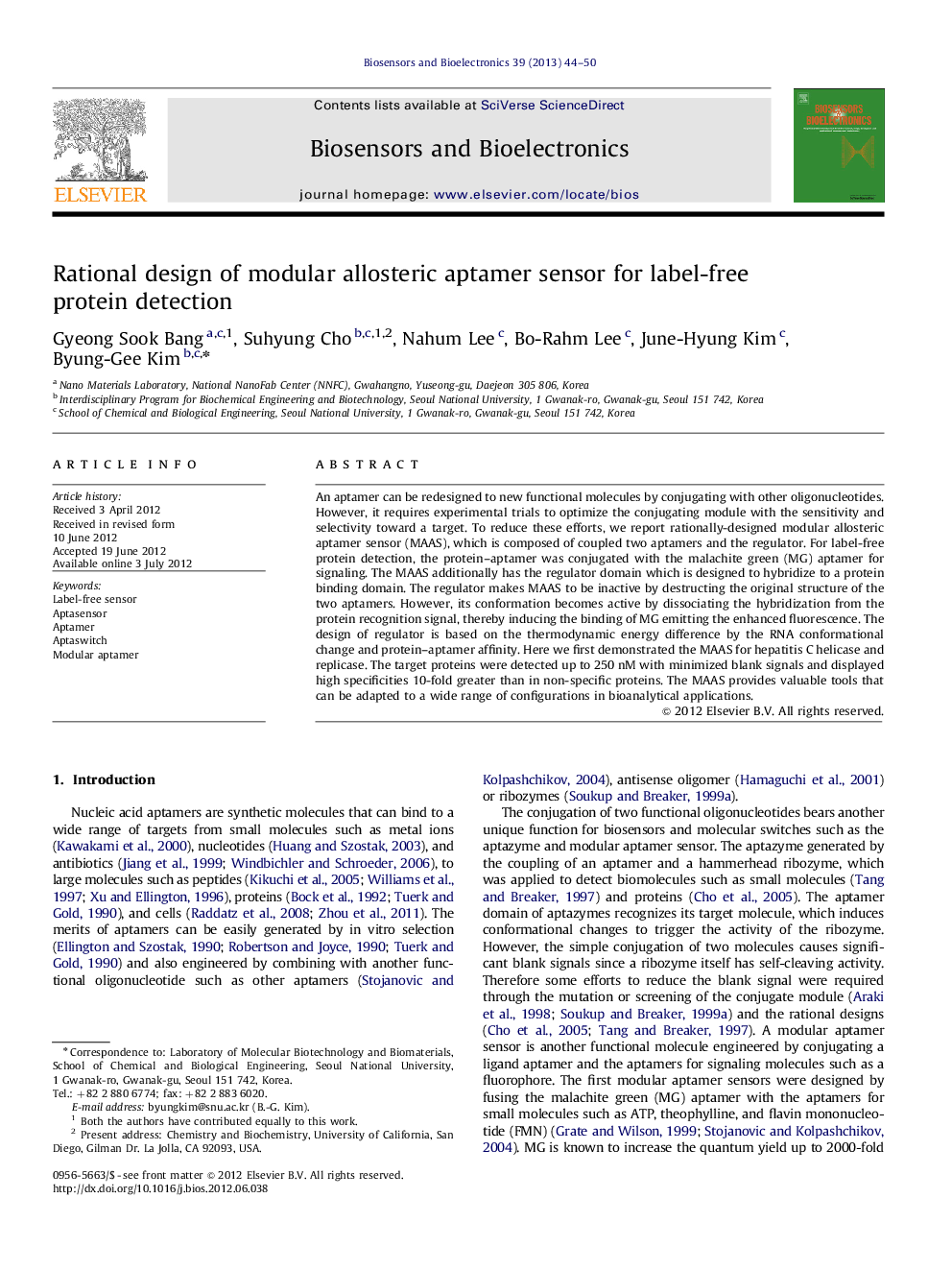| کد مقاله | کد نشریه | سال انتشار | مقاله انگلیسی | نسخه تمام متن |
|---|---|---|---|---|
| 867204 | 909779 | 2013 | 7 صفحه PDF | دانلود رایگان |

An aptamer can be redesigned to new functional molecules by conjugating with other oligonucleotides. However, it requires experimental trials to optimize the conjugating module with the sensitivity and selectivity toward a target. To reduce these efforts, we report rationally-designed modular allosteric aptamer sensor (MAAS), which is composed of coupled two aptamers and the regulator. For label-free protein detection, the protein–aptamer was conjugated with the malachite green (MG) aptamer for signaling. The MAAS additionally has the regulator domain which is designed to hybridize to a protein binding domain. The regulator makes MAAS to be inactive by destructing the original structure of the two aptamers. However, its conformation becomes active by dissociating the hybridization from the protein recognition signal, thereby inducing the binding of MG emitting the enhanced fluorescence. The design of regulator is based on the thermodynamic energy difference by the RNA conformational change and protein–aptamer affinity. Here we first demonstrated the MAAS for hepatitis C helicase and replicase. The target proteins were detected up to 250 nM with minimized blank signals and displayed high specificities 10-fold greater than in non-specific proteins. The MAAS provides valuable tools that can be adapted to a wide range of configurations in bioanalytical applications.
► We established modular allosteric aptamer sensor (MAAS) for label-free detection.
► The MAAS was engineered by aptamers for protein–dye and the antisense regulator.
► Rational-designed MAASs sensitively detected HCV proteins up to 250 nM.
► The MAAS showed the high specificity to target protein from other proteins over 10-fold.
► The MAAS was functional both in homogeneous and heterogeneous format.
Journal: Biosensors and Bioelectronics - Volume 39, Issue 1, 15 January 2013, Pages 44–50